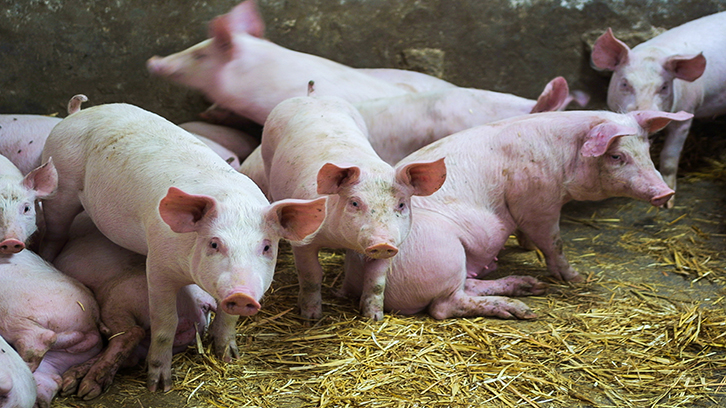Porcine circovirus 3 (PCV-3) detection in serum samples of pigs affected by digestive or respiratory disorders and healthy pigs

Porcine circovirus 3 (PCV-3) is a new member of the circoviridae family which infects swine and it has been identified in pigs affected by different disease conditions as well as in healthy animals. Although its pathogenicity has not yet been elucidated, many studies have detected the virus in diseased animals.
Porcine circovirus 3 (PCV-3) is a new member of the circoviridae family which infects swine and it has been identified in pigs affected by different disease conditions as well as in healthy animals. Although its pathogenicity has not yet been elucidated, many studies have detected the virus in diseased animals.
The objective of the present study was to assess the frequency of PCV-3 infection in serum samples from animals suffering from postweaning respiratory or digestive disorders as well as in healthy animals. A total of 315 swine serum samples were analysed by means of a conventional PCV-3 Polymerase Chain Reaction (PCR) technique; when positive, the same samples were tested by a quantitative PCR to assess the viral load in serum.
Subsequently, those samples with the highest viral load were sequenced to study viral genome variability. The analysed sera belonged to pigs between 4 week- to 4 month-old. Among the 315 serum samples, there were animals with respiratory (n=129) and digestive (n=126) disorders. Serum samples of age-matched healthy animals (n=60) served as negative control.
Pigs with clinical respiratory signs had a wide variety of pulmonary lesions including suppurative bronchopneumonia, fibrinous-necrotizing pneumonia and/or pleuritis, which are lesions compatible with bacterial infections and interstitial pneumonia, which is indicative of viral infection. The animals with enteric signs displayed histopathological findings like villus atrophy and fusion with catarrhal enteritis, indicating viral infection or catarrhal enteritis and catarrhal colitis, indicating a bacterial affection. The frequency of PCV-3 DNA detection among the different groups and types of lesions within each group was compared statistically. PCV-3 DNA was detected in 19 out of 315 analysed samples (6.0%). Among the diseased animals, PCV-3 was found in 6.2% (8 out of 129) and 5.6% (7 out of 126) of pigs with respiratory and digestive disorders, respectively. The frequency of PCV-3 PCR positive samples among healthy pigs was 6.7% (4 out of 60). Therefore, no statistical differences were observed between PCR positive cases and any type of histopathological lesion.
The phylogenetic analysis of the partial genome sequences obtained showed high identity among viruses from the three groups of animals studied (higher than 98%), indicating very closely related virus from a genetic point of view in all cases. In conclusion, PCV-3 was present in the serum of diseased and healthy pigs to similar percentages, suggesting that this virus does not seem to be causally associated with respiratory or enteric disorders.
V. Saporiti1, T. F. Cruz1, 2, F. Correa-Fiz1, J.I. Núñez1, M. Sibila1, J. Segalés3, 4
1IRTA, Animal Health Research Center (CReSA, IRTA-UAB), Universitat Autònoma de Barcelona (UAB).
2Department of Immunology and Microbiology, Institute of Biosciences, Universidad Estadual de São Paulo (Unesp), Botucatu, Brasil.
3Department of Health and Anatomy Animals, Faculty of Veterinary, UAB.
4UAB, Animal Health Research Center (CReSA, IRTA-UAB).
References
V. Saporiti, T. F. Cruz, F. Correa-Fiz, J.I. Núñez, M. Sibila, J. Segalés. Similar frequency of Porcine circovirus 3 (PCV‐3) detection in serum samples of pigs affected by digestive or respiratory disorders and age‐matched clinically healthy pigs. Transboundary and Emerging Diseases 2020. Jan; 67(1):199-205.https://doi.org/10.1111/tbed.13341


